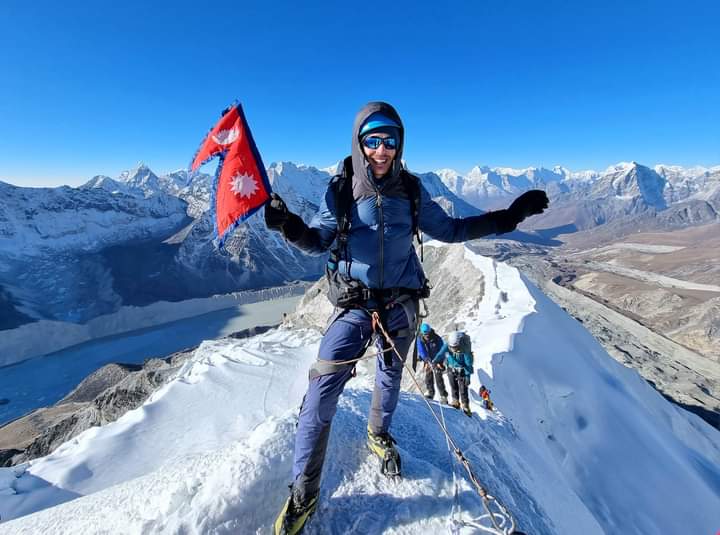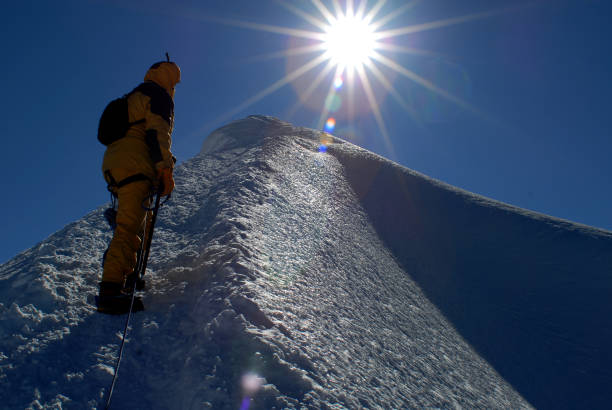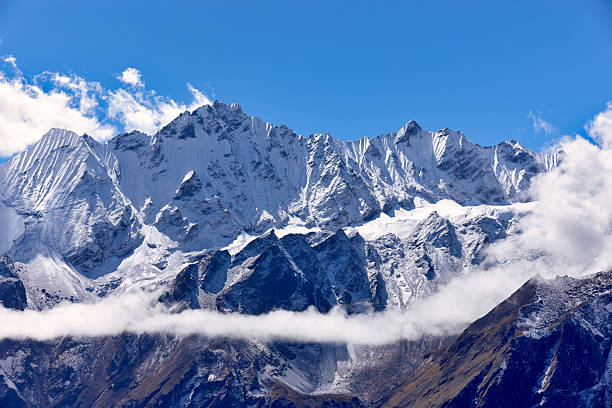Contact Info
Peak climbing in Nepal has a rich history that dates back to the early 20th century when explorers and mountaineers first began attempting the world’s highest peaks. Nepal officially opened its mountains to foreign climbers in 1949, marking the beginning of organized mountaineering in the country.and climbing section divided by 2 group in Nepal
Group A (Expedition Peaks):
Higher and more technical mountains requiring special permits and logistics.
Group B (Trekking Peaks):
Less technical peaks that are more accessible but still require climbing permits.
Why Climb Peaks in Nepal?
- Experience breathtaking views of the Himalayas.
- A stepping stone for high-altitude mountaineering, including Everest expeditions.
- A thrilling adventure that combines trekking and climbing.
- Cultural immersion in remote mountain villages and Sherpa hospitality.
Early Expeditions (Pre-1950s)
Before Nepal’s borders were opened, most Himalayan exploration was done from the Tibetan and Indian sides. However, after Nepal welcomed foreign climbers, mountaineers began planning expeditions to Nepal’s peaks.
The Golden Age of Mountaineering 1950s–1960s)
- 1950: The first successful ascent of an 8,000m peak in Nepal was Annapurna I (8,091m) by a French team led by Maurice Herzog.
- 1953: The most historic climb took place when Sir Edmund Hillary and Tenzing Norgay Sherpa became the first to summit Mount Everest (8,848m).
- 1954–1960s: Several other peaks, including Makalu (1955), Manaslu (1956), and Dhaulagiri (1960), were climbed, increasing Nepal’s popularity as a mountaineering destination.
Growth of Peak Climbing Tourism 1970s–1990s)
- In 1978, the Nepal Mountaineering Association (NMA) was established to regulate and promote mountaineering.
- Several trekking peaks (ranging from 5,500m to 7,000m) were classified as "trekking peaks," making them more accessible for climbers.
- The 1990s saw a rapid increase in international climbers as Nepal became one of the world's top destinations for adventure tourism.
Modern Era (2000s–Present)
- More infrastructure, professional guides, and safer climbing practices have made peak climbing more accessible.
- Nepal now attracts thousands of climbers annually for peaks like Island Peak, Mera Peak, Lobuche East, Pisang Peak, and Yala Peak.
- Climbing technology, better weather forecasting, and improved logistics have made Himalayan expeditions more efficient.
- Sustainable tourism and responsible climbing practices have gained importance to protect the fragile mountain environment.
- Well-Established Climbing Infrastructure
- Nepal has a well-developed trekking and climbing industry with:
- Experienced Sherpa guides and porters who are globally recognized for their mountaineering skills.
- High-altitude training centers that prepare climbers for extreme conditions.
- Established base camps with good logistics and support systems.
Rich Mountaineering History and Culture
Nepal has a long history of mountaineering, dating back to the first ascent of Everest in 1953 by Sir Edmund Hillary and Tenzing Norgay Sherpa. The Sherpa community, known for their resilience at high altitudes, has contributed immensely to Nepal’s mountaineering reputation.
Adventure and Personal Achievement
For adventure seekers, peak climbing in Nepal is a life-changing experience. Many climbers aim for Himalayan peaks as a personal achievement before attempting higher mountains. Climbing peaks like Island Peak and Mera Peak serves as a preparation for Everest.
Scenic Beauty and Unique Experience
Nepal offers stunning landscapes, including glaciers, icefalls, deep valleys, and snow-covered peaks. Climbing in Nepal isn’t just about reaching the summit—it’s about experiencing breathtaking Himalayan views and local culture.
Government and Tourism Support
The Nepal government promotes peak climbing by offering seasonal discounts on permits, climbing training programs, and infrastructure development in key trekking regions.
Opportunity for Beginners and Professionals
- Nepal’s peaks range from easy trekking peaks to technical climbing mountains, making it suitable for both beginners and expert climbers.
- Today, peak climbing in Nepal is not just about adventure but also about cultural exploration, personal achievement, and contributing to the local economy. With the growing interest in mountaineering, Nepal remains the ultimate destination for climbers worldwide.
Why Sherpa people are popular in mountain
- A Ethnic Group of The Sherpa people are an indigenous ethnic group from the Himalayan region of Nepal, mainly in Solu-Khumbu, Dolakha, and other mountainous areas. They have a distinct Tibetan-influenced culture, language, and traditions.
- A Profession in Mountaineering – Due to their high-altitude expertise, the term "Sherpa" is often used to describe mountain guides and helping who assist climbers on expeditions, especially in the Everest region. However, not all Sherpas are mountaineers, and many are involved in other professions.
- The name "Sherpa" comes from the Tibetan words "Shar" (east) and "Pa" (people), meaning "people from the east", referring to their migration from eastern Tibet to Nepal 15 to 16 centuries ago.
- Sherpas are popular in Nepal because of their exceptional mountaineering skills, rich cultural heritage, and contributions to the tourism industry, especially in high-altitude trekking and expeditions. Here are some key reasons for their popularity:
- Expert Mountaineers – Sherpas are naturally adapted to high altitudes and have played a crucial role in Himalayan expeditions, including Everest ascents.
- Guiding and Trekking Industry – They are the backbone of Nepal's trekking and mountaineering industry, ensuring the safety and success of climbers.
- Historical Significance – Legendary Sherpas like Tenzing Norgay, who summited Everest with Edmund Hillary in 1953, have made Sherpas globally recognized.
- Strong and Resilient – Their endurance, strength, and experience in extreme conditions make them highly respected in the adventure community.
- Cultural Heritage – Sherpas have a unique Tibetan-influenced culture, with vibrant festivals, monasteries, and traditions that attract travelers.
- Hospitality and Humility – Known for their kindness and honesty, Sherpas are admired by trekkers and climbers worldwide.
Because of these qualities, Sherpas are not only famous in Nepal but also highly respected in the global mountaineering and adventure tourism communities.





